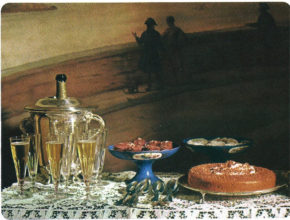By 1922, Lilian Eichler writes that, “Menu-cards are no longer used at the formal dinner, unless it is in celebration of some auspicious occasion and honored guests are present. In this case, the hostess has the menus printed or engraved in a delicate script and has one placed beside the plate of each guest. A favorite fashion is to have them printed in French. Sometime one of these cards serves for two guests, although the hostess who takes a pride in her dinners will provide each guest with one, as it serves as an appropriate souvenir of the occasions.”
Book Of Etiquette Volume II, by Lilian Eichler
I touched on menu cards briefly when I discussed place cards, but here we’ll do a deeper dive into these gorgeous collectables.
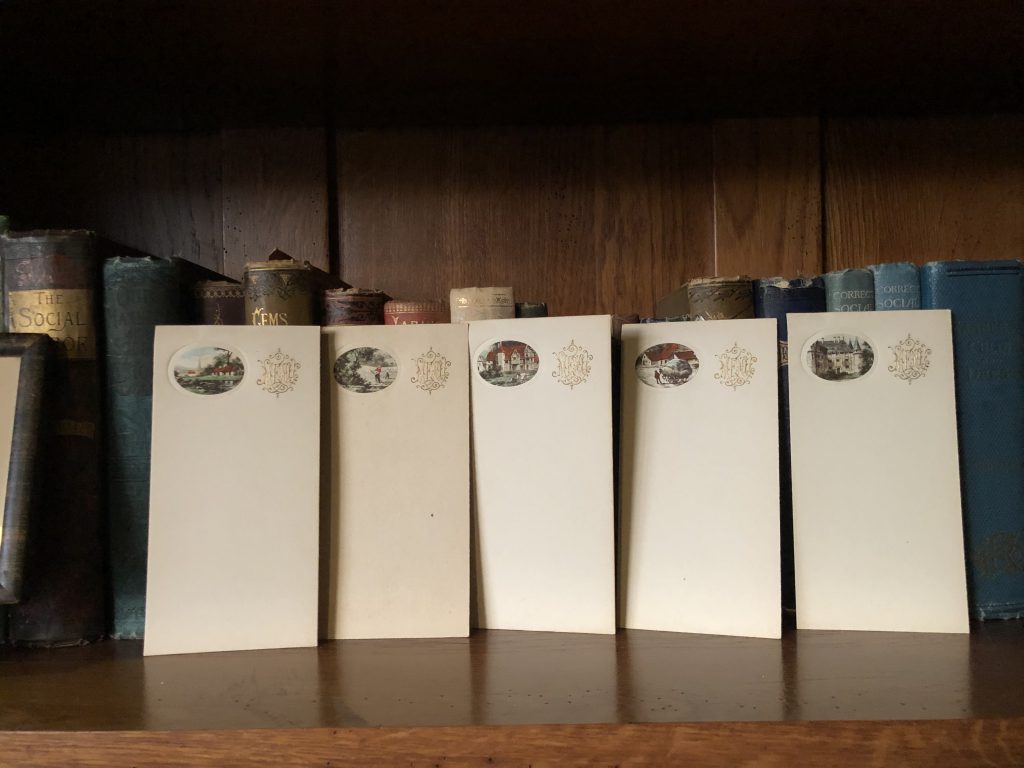
Menu cards are thought to go back to China during the Song Dynasty, but where menu cards really begin to resemble the items we use today is during the 18th century. The oldest known menu cards are from French royal dinners starting in 1751. Interestingly, at this time menu cards appeared at “intimate” dinners, not grand banquets. Now, when you’re the king, an intimate dinner can have 24 or more guests. So, intimate is in the eye of the beholder.
Menu cards tricked down to the tables of courtiers and the ruling class, and when their heads were separated from their bodies during the revolution, their newly unemployed servants took the menu with them to the restaurants that cropped up to cater to the new middle class.
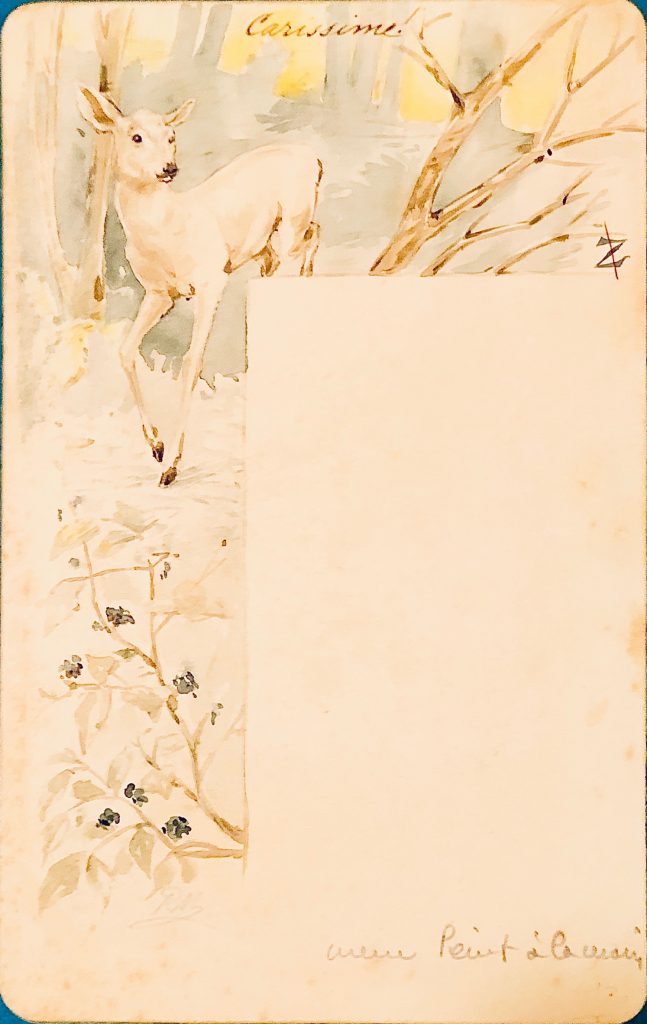
The Menu Card really gained popularity during the Victorian period. One might see a sterling menu card holder with the menu, printed or handwritten, at each place above the cover. In both France and England, the menu was written in French.
As is alluded to in the quoted book above, while some etiquette guides said that it was fine to place a menu card between places, allowing one for every two guests, this would have been frowned on by most people and the hostess might find herself accused of cheapness. The menu was to be taken home by each guest as a souvenir and to ask people to share, would have been seen as miserly. This was only really deemed as acceptable when all the diners were married couples, and therefore it was expected that they would not mind sharing a memento between them.
If there was no menu card holder, the menu was laid at each place, often tucked into the napkin. Sometimes the place card was laid on top if there was no place card holder. Each guest would place the menu card above the cover and out of the way but within reach, until the end of the meal.
While menu cards fell out of favor with the British and Americans in the twenties except for the most formal dinners and banquets, the French continued to use them commonly well into the sixties. There are stunning examples of menus for christenings, anniversaries, weddings, and banquets, but also for birthdays, holidays and even special family meals.
While popular, menu cards, like most dining paper, flowers and linens went through many fads. Ladies magazines from different eras chronicle the changing tastes in menu cards such as:
“The new menu card is expensive, but nevertheless a very elegant affair – a little transparent slate, in a delicate silver frame, with standard. The menu is written with pencil and can be removed with a damp sponge.”
Table Talk, Vol VIII No. 5, May 1893
I’ve seen menus just like this touted as “new” on wedding sites. Really, there’s nothing new under the sun.

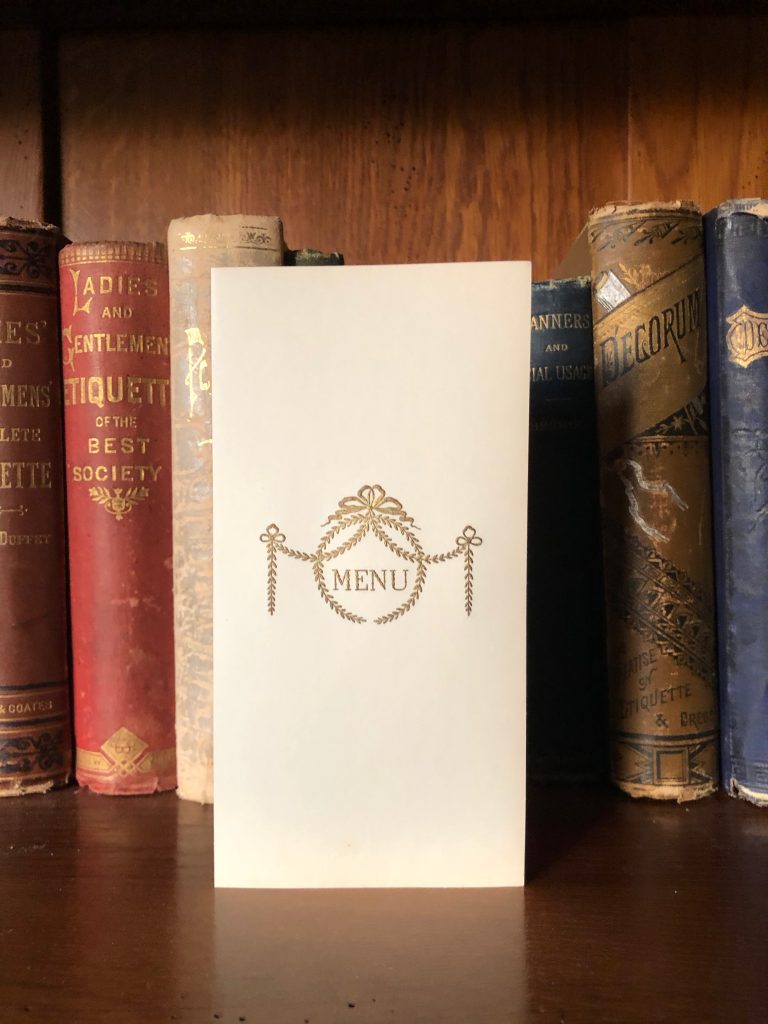
If you’re planning on collecting Menu cards there are two distinct categories with subsets. The main categories are un-used menu cards and menu cards with menus on them. I’ll cover used menu cards later, but suffice it to say there is a good deal of overlap. People may want to collect the designs and the artwork, others may use them for historical dinners. Sometimes used menus are for historical purposes or to recreate period food. People who collect menu cards sometimes overlap with the people who collect restaurant menus, again for a myriad of purposes. Right now we’re going to only look at the un-used menu cards.
In this category there are two main different types of menus. Those printed by stationers and those made and given out by companies as advertisement. As with all collectables, the more beautiful and intricate the more expensive something will be. The older it is, it is likely to be more expensive – so long as that period has desirable design elements. Mid-Century Modern 50’s designs are often more expensive than war time 40’s designs. Why? The style of MCM is one that resonates with a lot of people, it’s colorful, optimistic and has been replicated in television shows and films. The 40’s on the other hand is dominated by war time themes, rationing meant that many dyes and metal appliqués were not available and it didn’t seem like a time for frivolity so the designs can look quite dour. It’s still collected, but by a smaller group of people. Advertising designs will cost more depending on the subject matter and longevity of the companies doing the advertising. High end liqueurs and Champagnes are going to out sell no name, cheap brands. And cigarettes and cigars will have passionate collectors, (and some angry detractors).
When collecting menus, if you’re at a flea market or antique stall, do check if the seller will give you a better price on a bundle. You can even contact sellers on Etsy or Ruby Lane and see if they’ll do this. Sometimes you luck out. I asked a seller if they could bundle the two menus he had listed and he sent me back a slew of pictures of menus he’d not listed yet and gave me a great deal on the ones I wanted. It never hurts to ask.
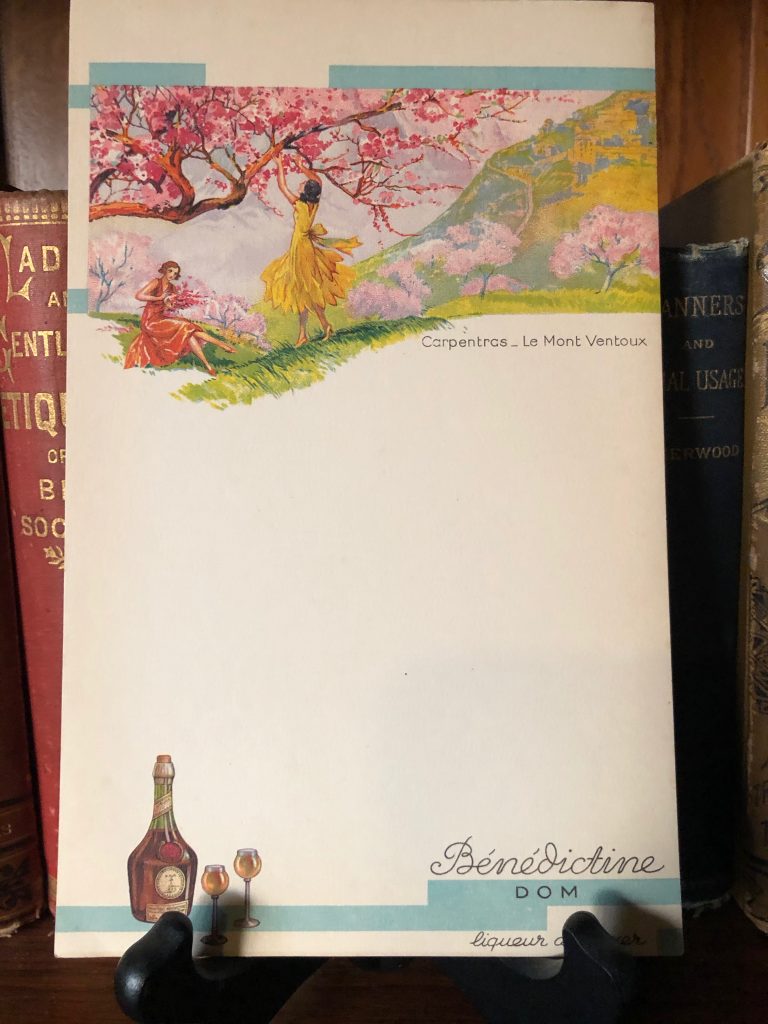
I hope you like this little foray into menus. I honestly adore collecting them, they’re small and inexpensive little works of art. Sending you and yours much love, Cheri


